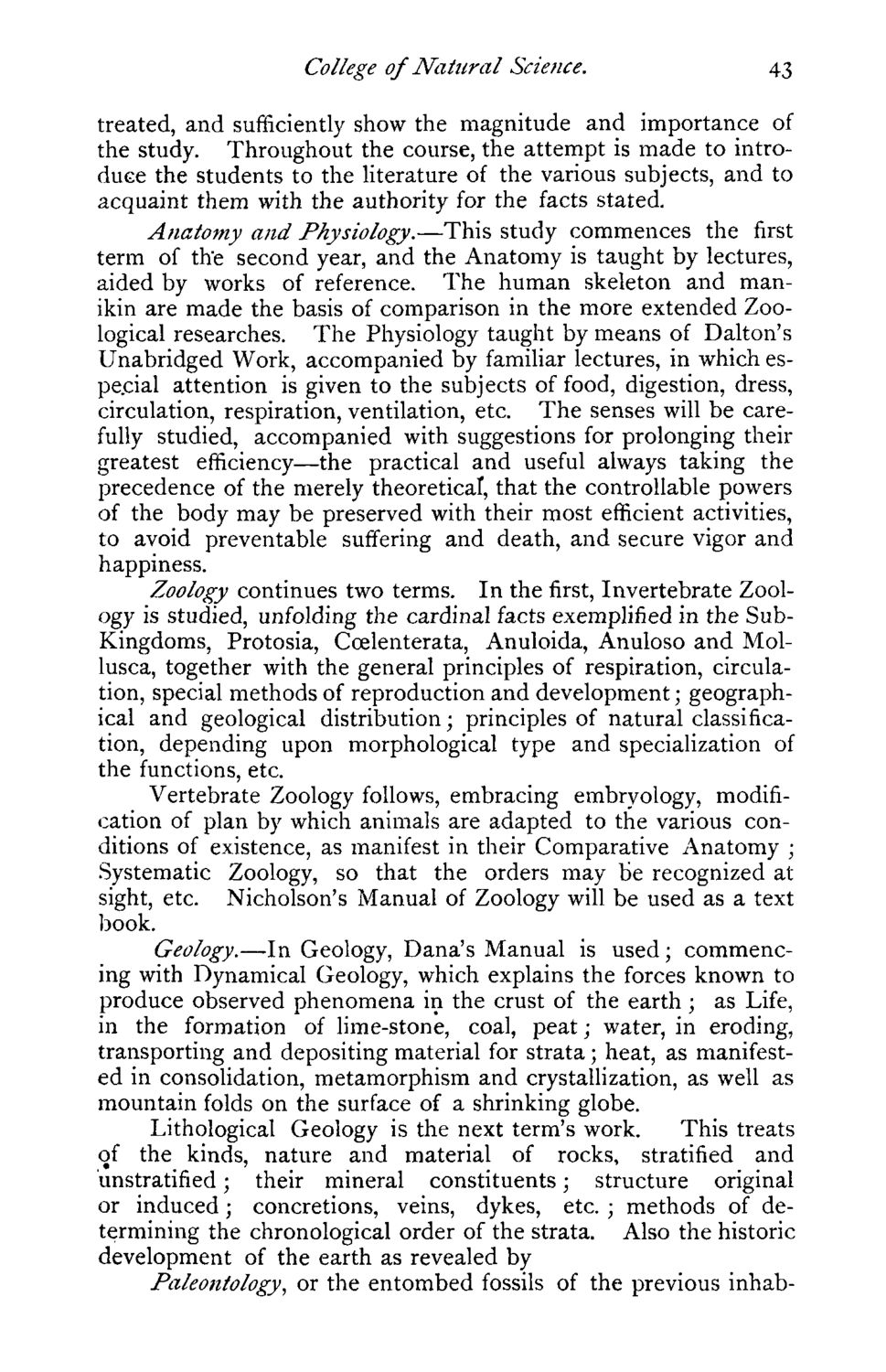| |
| |
Caption: Course Catalog - 1877-1878 Version B
This is a reduced-resolution page image for fast online browsing.

EXTRACTED TEXT FROM PAGE:
College of Natural Science. 43 treated, and sufficiently show the magnitude and importance of the study. Throughout the course, the attempt is made to introduce the students to the literature of the various subjects, and to acquaint them with the authority for the facts stated. Anatomy and Physiology.—This study commences the first term of the second year, and the Anatomy is taught by lectures, aided by works of reference. The human skeleton and manikin are made the basis of comparison in the more extended Zoological researches. The Physiology taught by means of Dalton's Unabridged Work, accompanied by familiar lectures, in which espe.cial attention is given to the subjects of food, digestion, dress, circulation, respiration, ventilation, etc. The senses will be carefully studied, accompanied with suggestions for prolonging their greatest efficiency—the practical and useful always taking the precedence of the merely theoretical, that the controllable powers of the body may be preserved with their most efficient activities, to avoid preventable suffering and death, and secure vigor and happiness. Zoology continues two terms. In the first, Invertebrate Zoology is studied, unfolding the cardinal facts exemplified in the SubKingdoms, Protosia, Ccelenterata, Anuloida, Anuloso and Mollusca, together with the general principles of respiration, circulation, special methods of reproduction and development; geographical and geological distribution; principles of natural classification, depending upon morphological type and specialization of the functions, etc. Vertebrate Zoology follows, embracing embryology, modification of plan by which animals are adapted to the various conditions of existence, as manifest in their Comparative Anatomy ; Systematic Zoology, so that the orders may be recognized at sight, etc. Nicholson's Manual of Zoology will be used as a text book. Geology.—In Geology, Dana's Manual is used; commencing with Dynamical Geology, which explains the forces known to produce observed phenomena in the crust of the earth ; as Life, in the formation of lime-stone, coal, peat; water, in eroding, transporting and depositing material for strata; heat, as manifested in consolidation, metamorphism and crystallization, as well as mountain folds on the surface of a shrinking globe. Lithological Geology is the next term's work. This treats of the kinds, nature and material of rocks, stratified and unstratified; their mineral constituents; structure original or induced; concretions, veins, dykes, etc. ; methods of determining the chronological order of the strata. Also the historic development of the earth as revealed by Paleontology, or the entombed fossils of the previous inhab-
| |